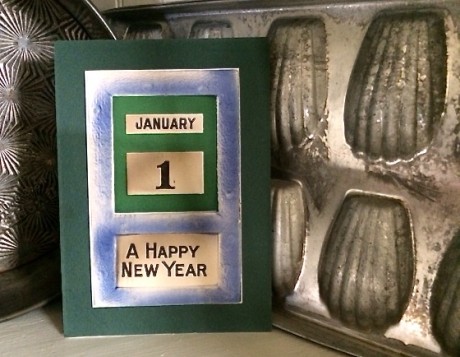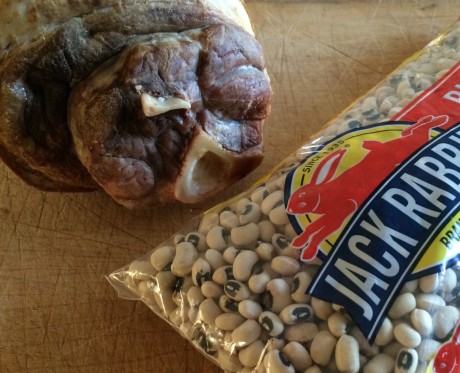TIME FLIES!
And how. It’s been way too long since I last posted—I was typing as fast as I could for folks who pay for it—but here’s hoping in the meantime you’ve made Chicken Marbella at least once, and are contemplating your journey into the new year.
Here at the Lears, we have a delicious few days ahead. There is Beef with Tomato Sauce and Garlic braising in the oven as I write this—just the ticket for a bitterly cold night, and the leftovers will come in handy over the weekend.
New Year’s Eve will find us at home, sitting down to Sweetheart Oysters or “Mama Macie’s Oyster Stew,” courtesy of Damon Lee Fowler. Either way, our richness of oysters, as my father was fond of saying, will be local, from Peconic Bay. As for the main course, we’re keeping it ultrasimple: confit duck legs from Hudson Valley Duck Farm, cooked until brown and crisp, then served bistro-style, with a watercress salad à la my former Gourmet colleague Paul Grimes. I have a feeling juicy pomegranate seeds will find their way into the mix—nice with the walnuts and orange slices called for in the recipe, no? And since dessert is Sam’s department, that frees me up to organize things for the following day.
That’s January 1, of course, and for us, that means Hoppin’ John, traditionally eaten for good luck in the American South, especially in the lowcountry of South Carolina and Georgia. It’s a very plain dish of field peas (today, the most common type used is the black-eyed pea) cooked in ham-hock broth and served with rice and collard greens, which symbolize “folding green” money. Why tempt fate?
Hoppin’ John
With thanks to The Gourmet Cookbook—as well as a few centuries of southern home cooks.
Serves about 8
As far as the traditional accompaniments go, they can be fraught for many. If cooking rice gives you the wobblies, try this tried-and-true Gourmet recipe; it’s called “foolproof” for a reason. And if you don’t have the time or inclination to cook your greens long and slow until they become supple, then cook them quickly, in the Brazilian style; they’re just as delicious, but in a different way, and you can easily substitute olive oil for the bacon and drippings if desired. Lastly, what will really put things over the top is some really good cornbread. My go-to recipe is from the Cornbread Goddess, Ronni Lundy.
A 16-ounce bag black-eyed peas, picked over and rinsed
1 large meaty ham hock (or 2 small ones)
9 cups water
2 tablespoons vegetable oil
1 large onion, chopped
Coarse salt and freshly ground pepper
1 small dried hot-but-not-searing chile or ¼ teaspoon dried red pepper flakes
Accompaniment: cooked long-grain rice
1. Soak the black-eyed peas: You can do this the slow way, by putting them in cold water to cover by about 2 inches, then soaking them for 8 hours, but quick-soaking works, too. Put them in a pan and cover with 2 inches of water, then bring to a boil and boil 2 minutes. Remove the pan from the heat and let the beans soak in their water, covered, 1 hour. After either method, drain the black-eyes in a colander and rinse.
2. Make the ham-hock broth: Combine the hock and 9 cups water in a deep pot and bring to a simmer. Simmer, uncovered, until the meat is tender, 1½ to 2 hours. Fish the hock out of the broth with tongs and let cool on a cutting board. Meanwhile, measure the broth: If you have more than 6 cups, boil until reduced to 6 cups; if you have less than 6 cups, add enough water to make up the difference. When the hock is cool enough to handle, remove the meat, discarding skin and bones, and chop.
3. Put ’em together: Heat the oil in a large heavy pot over moderately low heat. Add the onion and season with salt. Cook, covered and stirring occasionally, until softened, about 10 minutes. Add the chile or red-pepper flakes, drained black-eyes, broth, and ham; bring to a simmer and simmer, partially covered, until black-eyes are tender but not falling apart, 20 minutes or so. Discard chile, if using, and season with salt and pepper. The cooked black-eyes can be made a day or so ahead of time, cooled completely in the broth, and refrigerated. Reheat gently, adding a little water to thin.
4. To serve: Spoon the black-eyed peas over the rice and serve the extra black-eyes in their pot liquor on the side to provide more moisture. And Happy New Year!
Posted: December 30th, 2014 under cooking, culinary history, Gourmet magazine, recipes, winter.



